After a historic rally, last night’s earnings proved Tesla has a place among the great American companies.
The electric-car innovator maker crushed both profit and revenue forecasts as CEO Elon Musk fixed manufacturing problems. That resulted in both higher margins and record vehicle production. It also drove the stock over $600 for the first time, more than tripling its value from the lows of last June.
The next story will be TSLA’s expansion from its high-tech niche to the mass market. It’s already started with the new mid-priced Model Y crossover. Musk is also building a factory in China, which could ramp much faster than the U.S. because of the country’s air pollution.
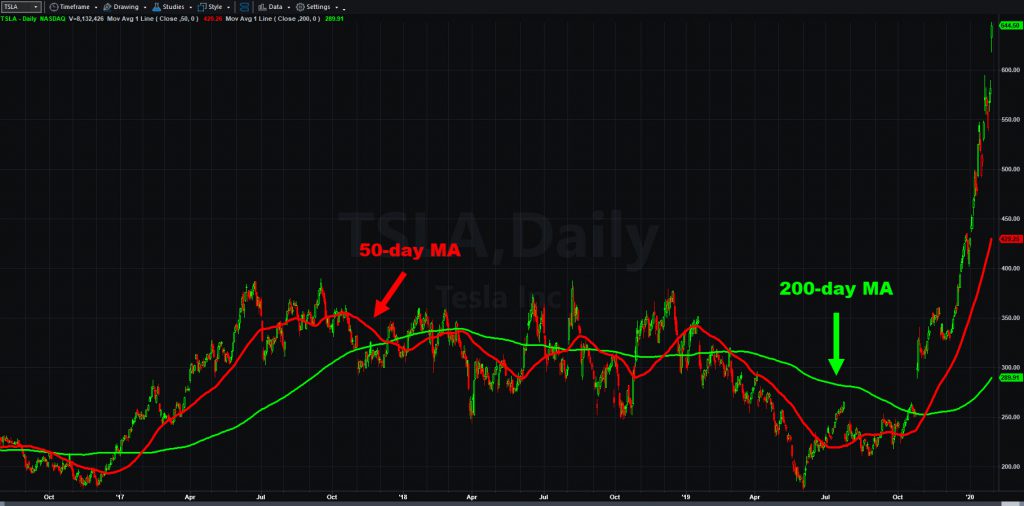
Last quarter’s results dispel any lingering doubts about the future of the 16-year old firm. The question now is what other positives could be next: a stock split? Inclusion in the S&P 500 index?
TSLA has arrived. Traders need to watch it going forward.
Apple’s Wearable Trend
Apple (AAPL) also had an historic quarter following a huge rally. Earnings and revenue beat forecasts, but the real story is a sweeping business transformation from expensive iPhones to lower-priced devices and higher-margin services.
Tim Cook wants to expand AAPL’s user base at the same time he grows services like TV+, AppleCare, iCloud and Arcade. That has the double benefit of shifting revenue from volatile gadgets into higher-margin and stickier businesses. Software companies have played this game for years. Now the most valuable U.S. company is unlocking hundreds of billions of dollars in new value with the same trick. Investors love it and are willing to pay higher multiples as a result.
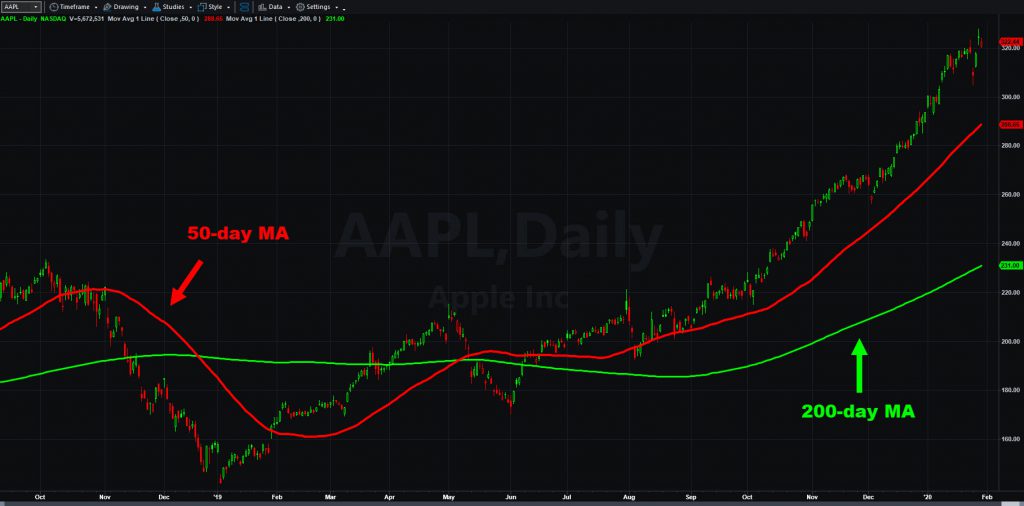
The other big story was surging demand for devices like Watch and AirPods. AAPL’s Wearables, Home and Accessories division grew 37 percent last quarter. Sales would have increased even faster if not for supply constraints — a sign of unmet demand. Even more positive, Cook said most of the people buying Watch are completely new customers.
So yes, AAPL is huge. But last quarter suggests it’s only getting bigger. And that doesn’t even consider the coming wave of super-fast 5G iPhone and expansion into China.
Facebook’s Failed Breakout
While TSLA is blossoming and AAPL is evolving, Facebook’s (FB) quarter showed potential stagnation. Average revenue per user (ARPU) across all its services, including Instagram and WhatsApp, were 13 percent lower than FB’s legacy social-media platform.
Translation? The newer products that are supposed to drive future growth are not surging. Instead, they’re getting subsidized by its older “big blue app.” Legal costs are also rising as regulators tighten privacy rules.
FB tried to break out to new highs before the report. But this morning, its shares crashed back under the $218 area where they peaked in July 2018. Technicians may view that as a failed breakout and double-top.
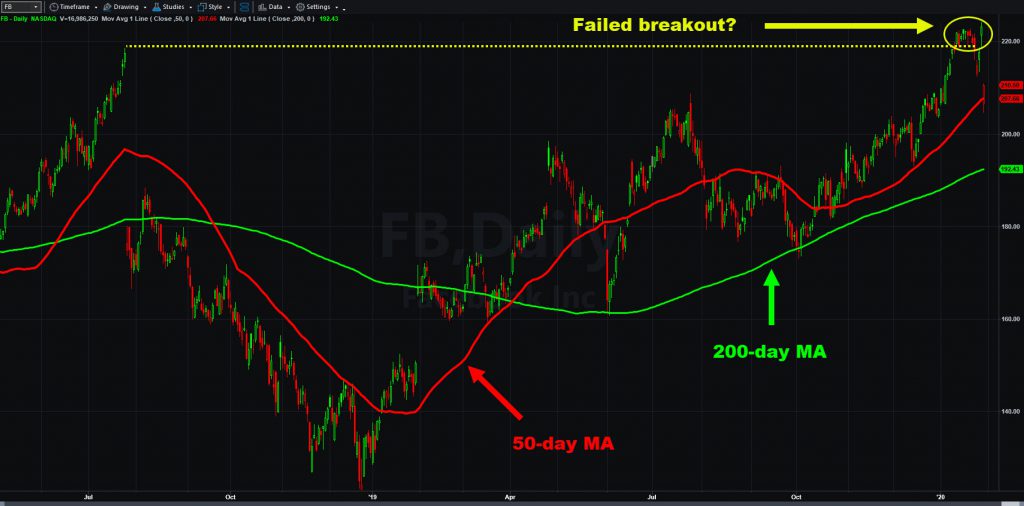
It also raises a question about Pinterest (PINS), which is gaining market share. How long before social-media investors reallocate some of their capital away from FB and into PINS?
Intel vs. Advanced Micro
Intel (INTC) was perhaps the biggest surprise in the last week of earnings. Analysts were skeptical before its report, but the semiconductor giant stunned Wall Street with a surge of orders for data-center chips. That triggered its biggest rally in over two years, and sent the stock back to levels last seen in late 2000.
Advanced Micro Devices (AMD) was just the opposite. It rode a wave of bullishness into its quarterly report — partially because it recently took market share from INTC. But guidance disappointed amid its weakness in videogame consoles. That caused AMD’s biggest drop since last August.
Microsoft (MSFT) also had another strong quarter, with its cloud-based Azure service growing faster than expected. That pushed the top and bottom lines ahead of forecasts and sent its shares to a new record high.
General Electric’s Big Turn?
General Electric (GE) was another big turnaround name. The once-mighty industrial giant lost almost 80 percent of its value in 2017 and 2018, and has been trying to stabilize since.
GE started showing signs of a turnaround in October after management returned its core businesses to profitability. That trend continued last quarter, driving the stock to its highest level in more than a year. Analysts seem to view it increasingly as a value play that fell too much on debt concerns and is now poised for a longer-term rebound.
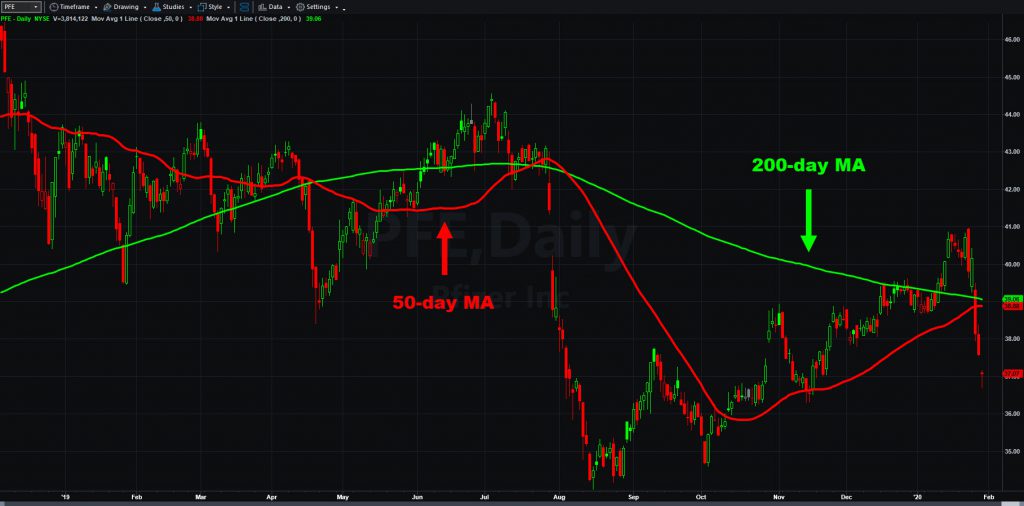
Two other blue chip companies, however, showed signs of heading in the opposite direction: Pfizer (PFE) and 3M (MMM).
Drug maker PFE missed earnings estimates as costs rose. Management is taking big steps to reorganize its business, shedding the Upjohn division holding Viagra and Lipitor (now generic). The pain drug Lyrica also had a sharp slowdown. It was PFE’s second bearish report in the last three quarters, and sunk the shares back below its 200-day moving average.
Post-it Notes and Cannabis
MMM also faces weak demand for its legacy products — and not just Postit notes. Health-care, transportation and industrial sales all declined. The company also faces new legal costs from PFAS chemical pollution at old factories. Executives tried to blame weakness in China, but investors didn’t buy it. MMM, like PFE, dove back under its 200-day MA.
Scotts Miracle-Grow (SMG) broke out to a new all-time high after earnings and revenue beat estimates. It might be the middle of winter, but demand is growing rapidly for its Hawthorn hydroponic products in marijuana states like California and Colorado.
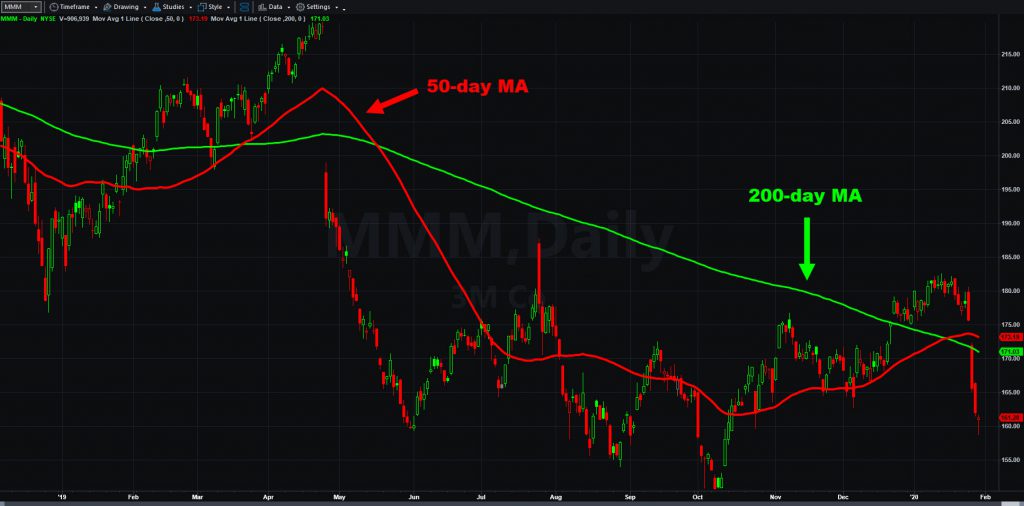
Northfolk Southern (NSC) also shot into new record territory after management successfully embraced a continuous-improvement plan called TOP21. The program decentralizes decision making so railroad employees can remove costs at the micro level. It improved margins and let NSC beat profit estimates — even as shrinking coal traffic kept revenue below consensus.
In conclusion, we’ve just finished the most important stretch of earnings season. TSLA and AAPL took dramatic strides forward. INTC and GE had big comebacks. But FB is struggling and AMD failed to live up to lofty expectations.





















